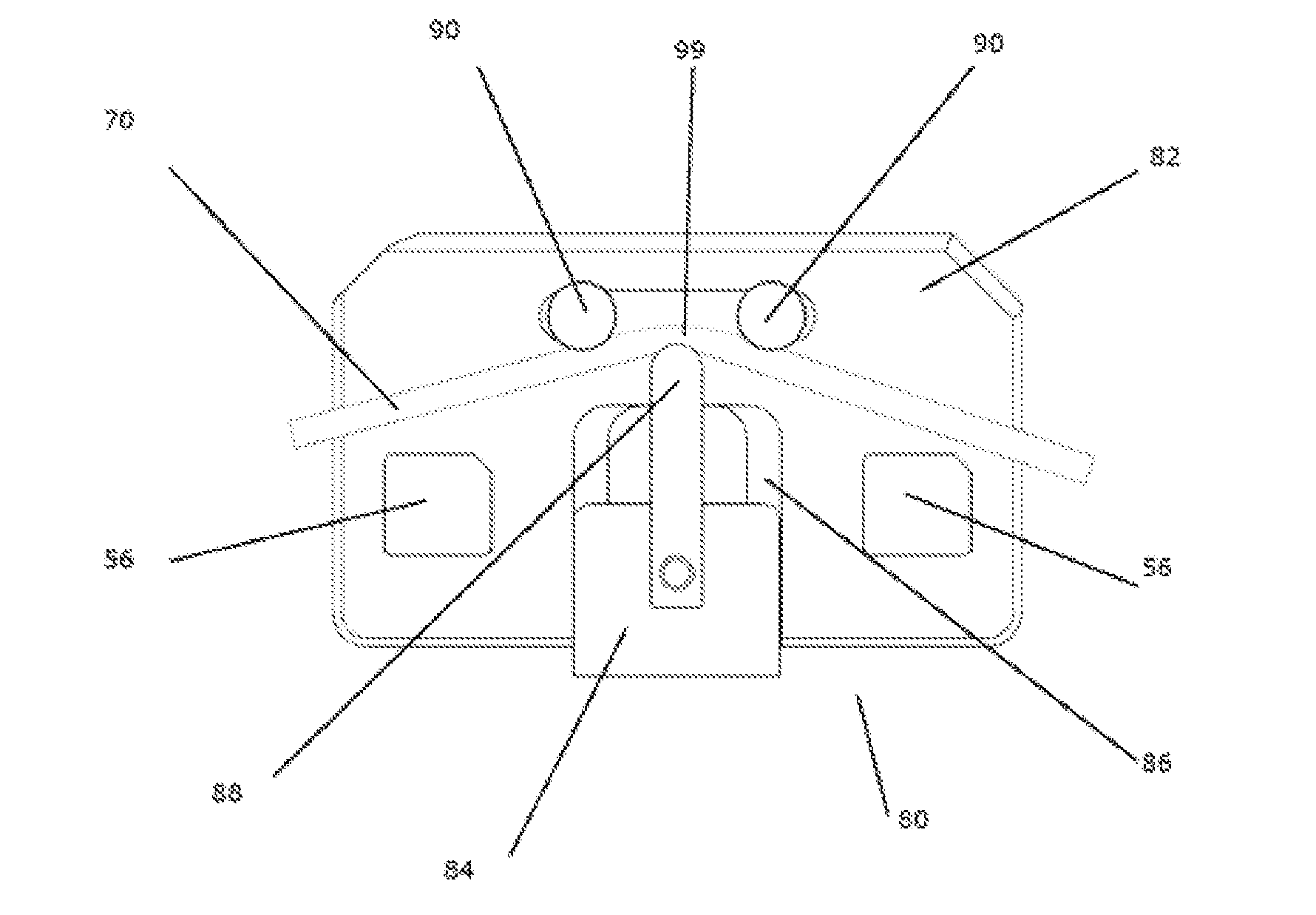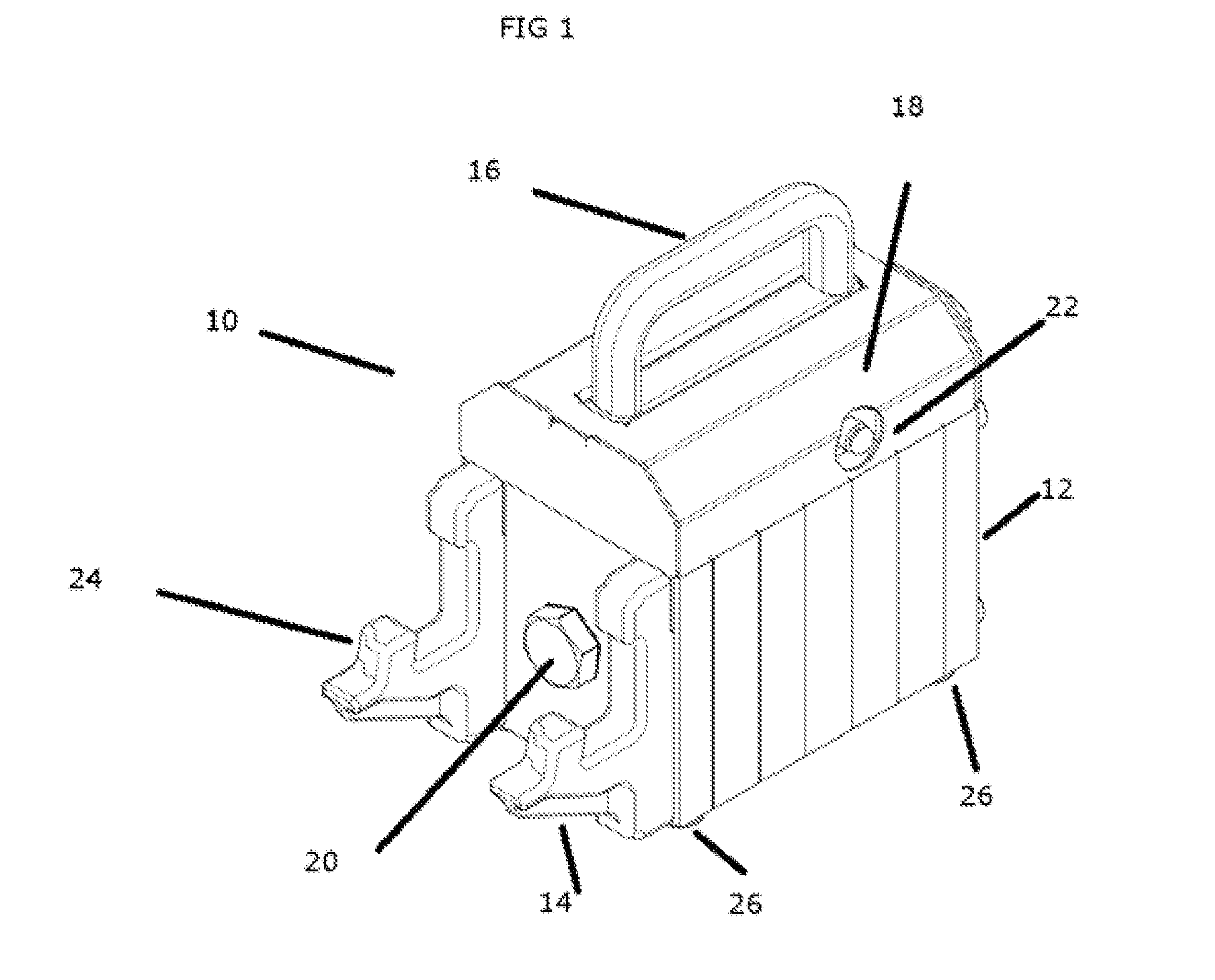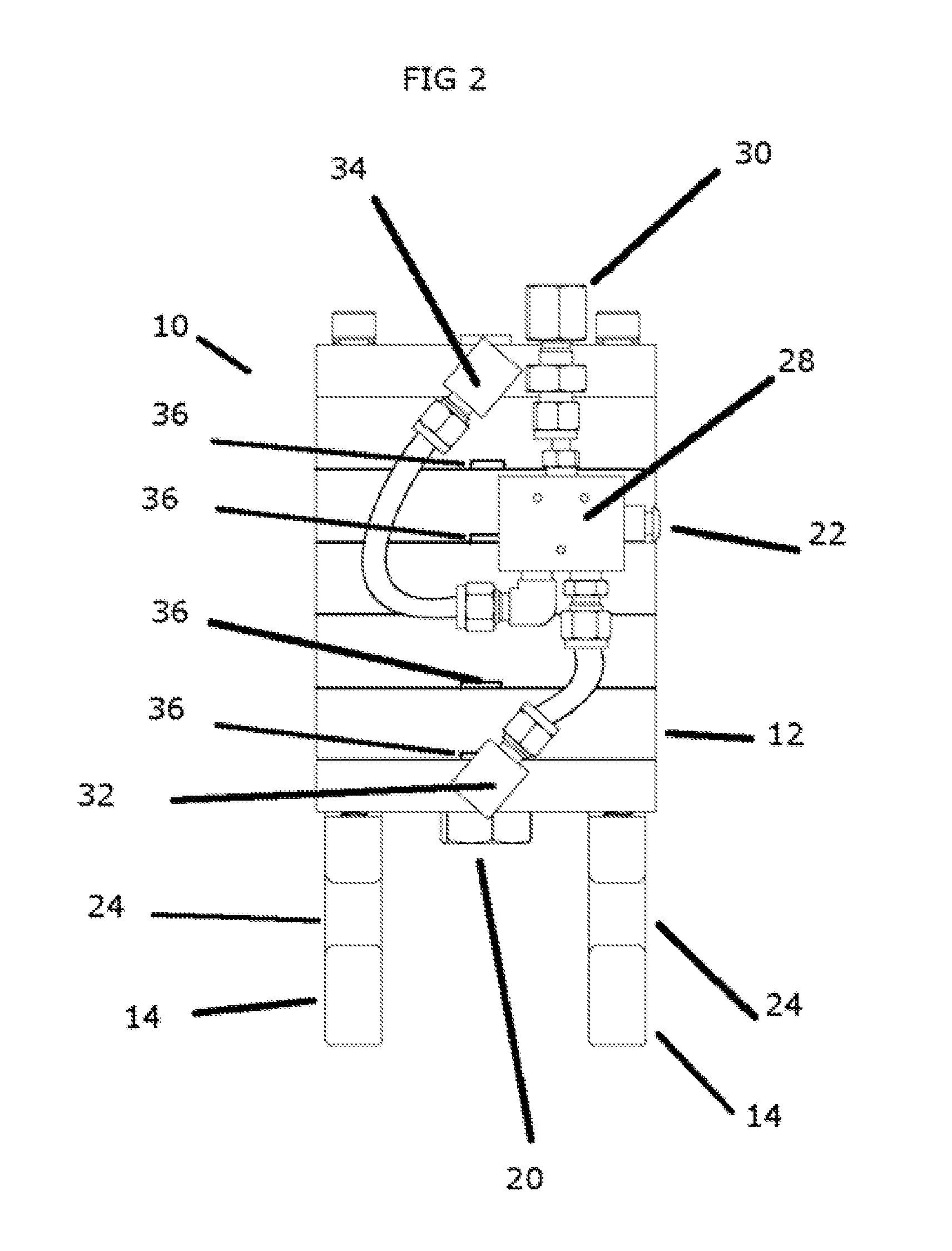Automated surgical rod cutter and bender including a power-base, assembly for rod cutting, and assembly for rod bending
a technology of surgical rods and bending rods, which is applied in the direction of forging presses, forging/pressing/hammering devices, forging presses, etc., can solve the problems of large floor or counter space, difficult for operating room personnel to handle, and large weight, and achieve the effect of precise changes in the linearity of rods
- Summary
- Abstract
- Description
- Claims
- Application Information
AI Technical Summary
Benefits of technology
Problems solved by technology
Method used
Image
Examples
Embodiment Construction
I. Overview
[0033]The automated rod manipulator consists of a power-base 10 as shown in the drawings that is a portable table top tool that is specifically designed and adapted for the manipulation of high strength surgical implant rods used for orthopedic surgery. The rod must be custom fitted to the patient during operation and consequently is required to be cut and bent quickly, cleanly, sterilely, and easily during the operation. Due to the strength of the metals used for surgical implants, large manual shear and wedge cutters and manual rod benders have been traditionally used. These have the disadvantages of being large and unwieldy, imprecise, and requiring significant muscular force and / or body weight to use. The automated rod manipulator consists of a power-base 10 and an array of attachments for manipulating the rod, including the cutting assembly 50 and bending assembly 80.
II. Power-Base
[0034]The power-base 10 is the main power source for manipulating the rod. It is portab...
PUM
| Property | Measurement | Unit |
|---|---|---|
| diameter | aaaaa | aaaaa |
| diameter | aaaaa | aaaaa |
| diameters | aaaaa | aaaaa |
Abstract
Description
Claims
Application Information
 Login to View More
Login to View More - R&D
- Intellectual Property
- Life Sciences
- Materials
- Tech Scout
- Unparalleled Data Quality
- Higher Quality Content
- 60% Fewer Hallucinations
Browse by: Latest US Patents, China's latest patents, Technical Efficacy Thesaurus, Application Domain, Technology Topic, Popular Technical Reports.
© 2025 PatSnap. All rights reserved.Legal|Privacy policy|Modern Slavery Act Transparency Statement|Sitemap|About US| Contact US: help@patsnap.com



